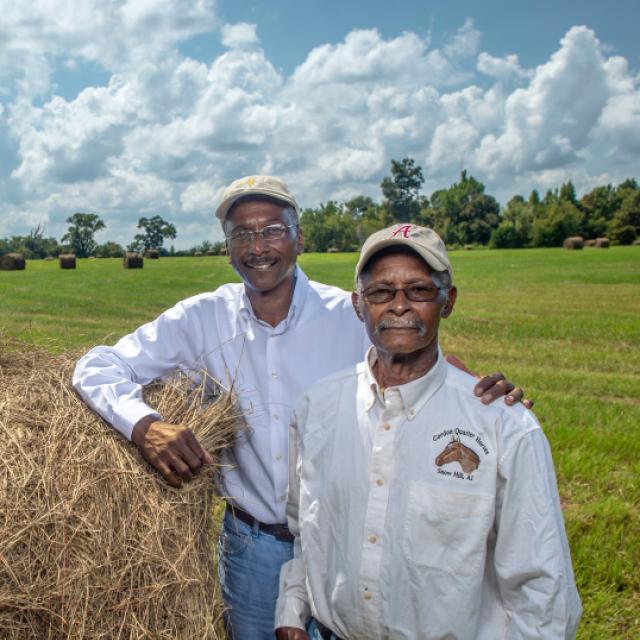
The grasslands that make up the Great Plains are one of the most recognized landscapes on Earth, but they’re also one of the most imperiled. The western plains include short and mixed grass prairie grasses, forbs and wildflowers, and wet sites like playas, river bottoms, and wet meadows.
On This Page
Working Lands for Wildlife
Working Lands for Wildlife (WLFW) is a coordinated effort in the Great Plains and South Dakota NRCS is one of the many partners. The organization focuses on a proactive approach to conserving large and intact grassland cores. The plan is to protect, and expand, core areas, benefit grassland-dependent wildlife, grazing economies, and rural communities.
WLFW Information
Sage Grouse Initiative (SGI)
The Natural Resources Conservation Service (NRCS) is taking steps to ensure the enhancement and preservation of sage-grouse habitat and the sustainability of working ranches and farms in the western United States.
The sage-grouse, a ground-dwelling bird native to the sagebrush steppe ecosystem of the American West, has experience a significant decline in population and habitat over several decades. Greater sage-grouse are found in California, Colorado, Idaho, Montana, Nevada, North Dakota, Oregon, South Dakota, Utah, Washington, and Wyoming.
The Sage Grouse Initiative will help land owners respond proactively and implement specific actions to protect the species.
Applications are accepted throughout the year.
- Sage Grouse Initiative Fact Sheet (SD-FS-88)
- SD Eligible Practice List
- SD Sage Grouse Threat Checklist
- Greater Sage Grouse Initiative Priority Areas
For More Information
Other Web sites:
Program Contact
Valorie DuPraz, Assistant State Conservationist for Programs, 605-352-1226
Kevin Luebke, Biologist, 605-352-1242
Jennifer Wurtz, EQIP Coordinator, 605-352-1225
Additional Information
Apply for Environmental Quality Incentives Program (EQIP)
The Environmental Quality Incentives Program (EQIP) provides financial and technical assistance to agricultural producers and non-industrial forest managers.
Learn MoreFarm Bill
The 2018 Farm Bill was enacted on December 20, 2018. The Farm Bill continues its strong support for conservation efforts of America’s farmers and ranchers through reauthorization and expanded flexibility of NRCS conservation programs.
Learn MoreReady to get started?
Contact your local service center to start your application.
How to Get Assistance
Do you farm or ranch and want to make improvements to the land that you own or lease?
Natural Resources Conservation Service offers technical and financial assistance to help farmers, ranchers and forest landowners.

To get started with NRCS, we recommend you stop by your local NRCS field office. We’ll discuss your vision for your land.
NRCS provides landowners with free technical assistance, or advice, for their land. Common technical assistance includes: resource assessment, practice design and resource monitoring. Your conservation planner will help you determine if financial assistance is right for you.
We’ll walk you through the application process. To get started on applying for financial assistance, we’ll work with you:
- To fill out an AD 1026, which ensures a conservation plan is in place before lands with highly erodible soils are farmed. It also ensures that identified wetland areas are protected.
- To meet other eligibility certifications.
Once complete, we’ll work with you on the application, or CPA 1200.
Applications for most programs are accepted on a continuous basis, but they’re considered for funding in different ranking periods. Be sure to ask your local NRCS district conservationist about the deadline for the ranking period to ensure you turn in your application in time.
As part of the application process, we’ll check to see if you are eligible. To do this, you’ll need to bring:
- An official tax ID (Social Security number or an employer ID)
- A property deed or lease agreement to show you have control of the property; and
- A farm number.
If you don’t have a farm number, you can get one from USDA’s Farm Service Agency. Typically, the local FSA office is located in the same building as the local NRCS office. You only need a farm number if you’re interested in financial assistance.
NRCS will take a look at the applications and rank them according to local resource concerns, the amount of conservation benefits the work will provide and the needs of applicants. View Application Ranking Dates by State.
If you’re selected, you can choose whether to sign the contract for the work to be done.
Once you sign the contract, you’ll be provided standards and specifications for completing the practice or practices, and then you will have a specified amount of time to implement. Once the work is implemented and inspected, you’ll be paid the rate of compensation for the work if it meets NRCS standards and specifications.

